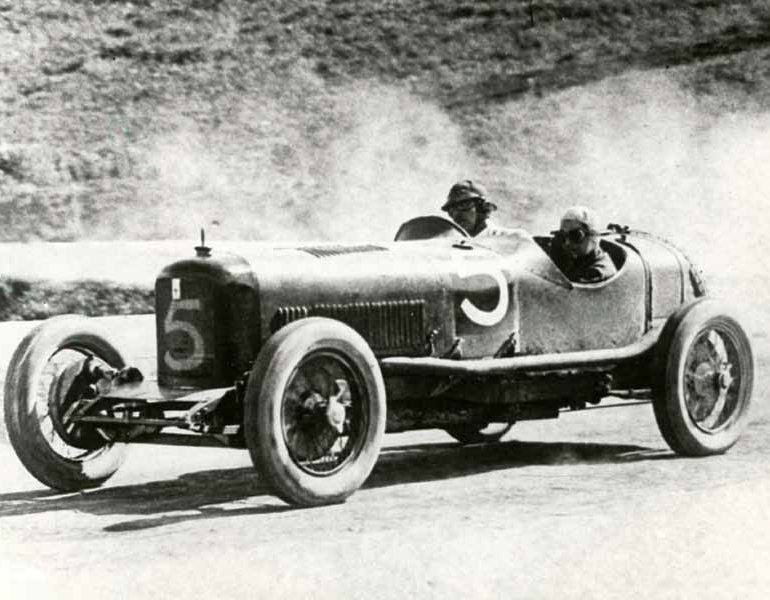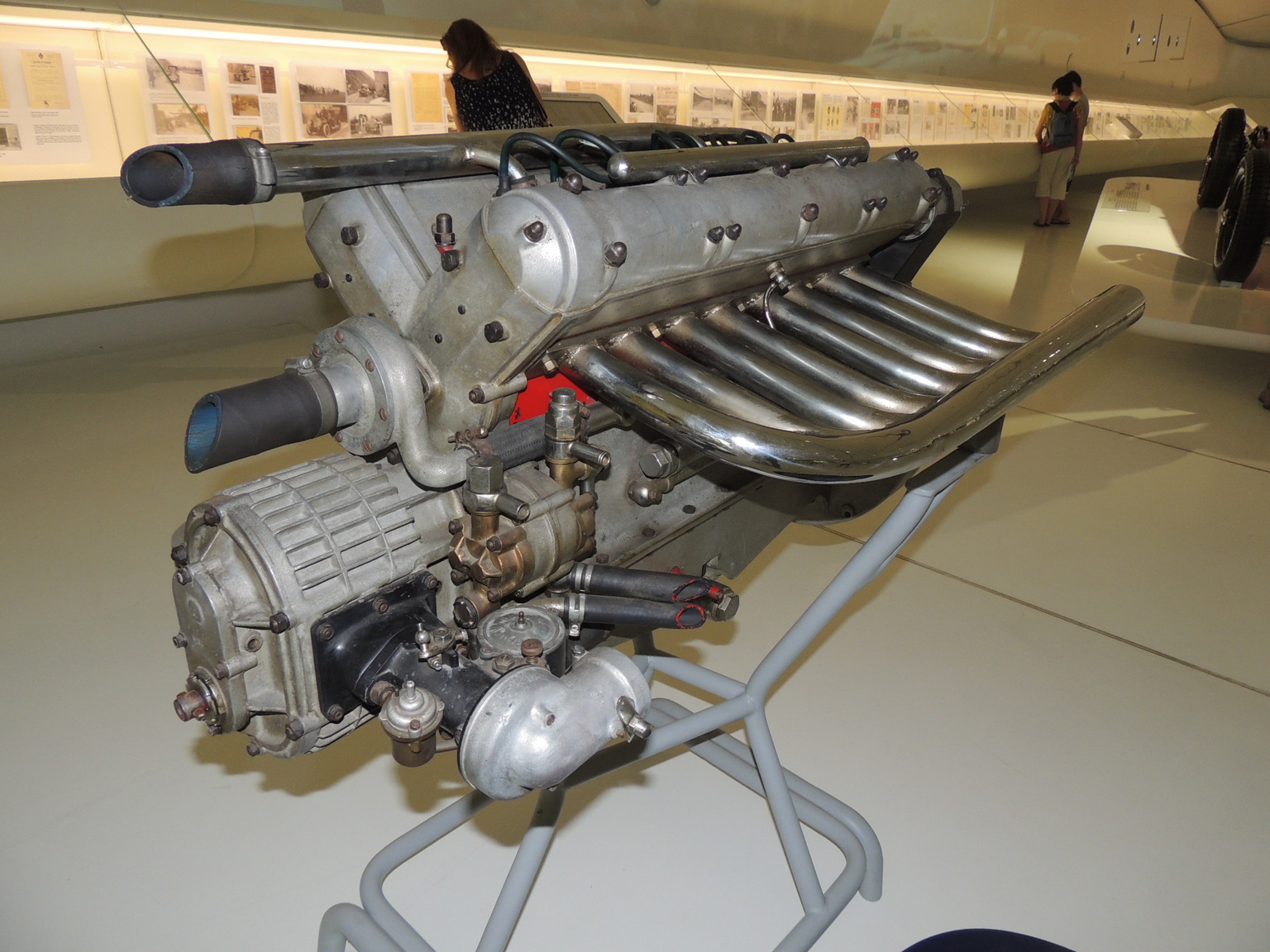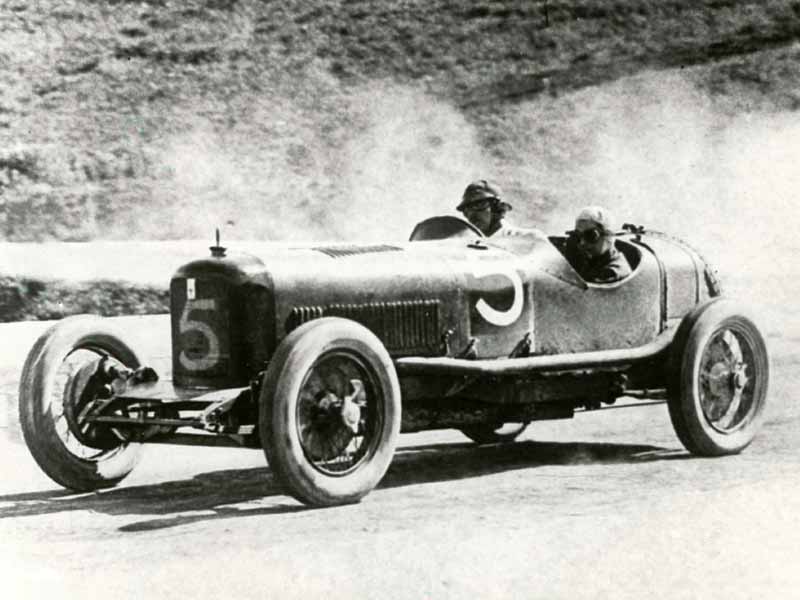1926 Maserati Tipo 26
During a period of raising public interest in mechanical engineering, five brothers took great interest in developing anything with an internal combustion engine. Carlo, Bindo, Alfieri, Ettore and Ernesto were sons of Rodolfo Maserati. They benefited from his expertise in railway engineering and began constructing motorized bicycles as early as 1900.
First onto the motor racing scene was Carlos. After briefly working for Fiat, Carlos worked for Cesare Isotta and Vincenzo Fraschini as a technical director of Isotta Fraschini. Thanks to the help of Carlos, his brother Alfieri was hired by the firm in 1903 followed by Ettore and Bindo. The brothers remained in the company for at least five years until 1907, when Carlos changed to Bianchi and then, in 1910, prematurely died of illness. This left Alfieri to lead the Maserati brothers.
After a racing as mechanic alongside driver Vincenzo Trucco in an Isotta Fraschini Type FE, Alfieri was motivated towards independence in the world of motor sports. His plan was to start his own firm utilizing family talent and cooperation. Unfortunately his plans were halted until the end of world war one. After the war a shop was setup near Bologna to maintain and built racing cars under the name Societa Anomina Officine Alfieri Maserati.
After successfully racing modified Isotta Fraschinis and a couple other cars in the early 1920s, the brothers were offered a deal by Diatto works. Specifically, Diatto wanted Maserati to help race their new Type 20S against competition including the Fiat 804 and Alfa Romeo RL. While working for Diatto, the Maserati brothers developed a supercharged, straight eight engine for the 1925 Two Liter Formula. After a few unsuccessful races, the collaboration between Maserati and Diatto ended.
The First Maserati
Experience and engineering principles used to construct the Diatto cars provided a basis for the first Maserati, the Type 26. The car used many relatively standard designs which kept component failure and escalating costs to a minimum.
The design of the Type 26 consisted of a steel, ladder-type frame supportinh a Diatto-like inline-8 and Diatto three-speed transmission. The body covered these elements in a skin of aluminum.
Fitting with the 1926 regulations, the Type 26 had a 1.5 liter engine which was a smaller version of the Diatto two-liter designed a year earlier. Both engines featured crankshaft-driven Roots superchargers, twin overhead camshafts and light alloy blocks. The main upgrades to the Maserati engine included a stronger cast-iron cylinder head, roller-type main bearings and dry-sump lubrication.
Throughout its racing career, the Type 26 was subject to constant evolution which created individual differences on each chassis. By 1927 upgrades the carburetion and engine lubrication were completed. This including swapping the carburetors to run at front of the intake system, before the supercharger, to avoid flooding. By 1928, honeycomb radiators and a smaller, more lightweight chassis were standard.
Type 26 in Racing
Maserati’s first motor sport race was over the Sicilian Mountains. This race was of course the Targa Florio were the Type 26 debut was quite successful. Despite the over all victory going to a Bugatti Type 35, Alfieri Maserati drove his car to ninth place, taking a class victory in Grand Prix formula.
After the Targa, two lighter Type 26s were entered in the Italian Grand Prix at Monza. Unfortunately, both cars retired with lubrication and carburetion issues which were rectified for the 1927 season.
For the rest to the season Maserati secured an additional class victory at the Tripoli Grand Prix in North Africa. Since Grand Prix Formula was being dissolved at the end of the year, this meant the 1.5 liter Maserati engine had to be enlarged if it was going to take advantage of the new two liter class. For 1927, a Type 26B was released featuring a two liter engine, having a bore and stroke of 62 x 82 mm.
In Detail
| submitted by | Richard Owen |
| production | 10-12 |
| engine | Supercharged Inline-8 w/dry Sump Lubrication |
| position | Front Longitudinal |
| aspiration | Roots Compressor w/Twin Memini Super Carbs |
| valvetrain | DOHC, 2 Valves per Cyl |
| displacement | 1492 cc / 91.0 in³ |
| bore | 60 mm / 2.36 in |
| stroke | 66 mm / 2.6 in |
| compression | 5.8:1 |
| power | 89.5 kw / 120 bhp @ 5300 rpm |
| specific output | 80.43 bhp per litre |
| bhp/weight | 153.85 bhp per tonne |
| body / frame | Aluminum Body over Steel Frame |
| driven wheels | Front Engine |
| front tires | Dunlop 4.75×18 |
| rear tires | Dunlop 5.00×18 |
| front brakes | Mechanical Drums |
| f brake size | mm / in |
| rear brakes | Mechanical Drums |
| r brake size | mm / in |
| front wheels | F 45.7 x 7.6 cm / 18 x 3 in |
| rear wheels | R 45.7 x 8.3 cm / 18 x 3.25 in |
| steering | Worm Gear |
| f suspension | Leaf Springs w/Friction Dampers |
| r suspension | Leaf Springs w/Friction Dampers |
| curb weight | 780 kg / 1720 lbs |
| wheelbase | 2650 mm / 104.3 in |
| front track | 1340 mm / 52.8 in |
| rear track | 1360 mm / 53.5 in |
| length | 3670 mm / 144.5 in |
| width | 1500 mm / 59.1 in |
| height | 1250 mm / 49.2 in |
| transmission | Diatto 3-Speed Manual |
| gear ratios | :1 |
| top speed | ~180.2 kph / 112 mph |






